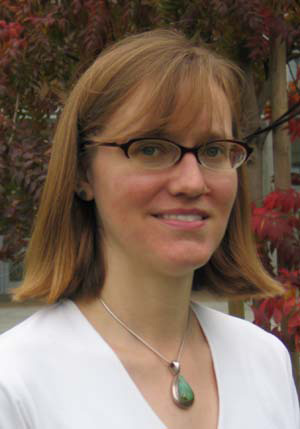

Every second, plants take in carbon dioxide through photosynthesis. At the same time, soil microbes produce carbon dioxide when they consume dead organic materials.
These exchanges with the atmosphere historically have been in balance. But global climate change could upset that carbon cycling equilibrium.
Lara Kueppers, a new professor in the School of Natural Sciences at UC Merced, studies the interactive relationship between global climate change and ecosystems through carbon cycling, and she skillfully explains the basic questions addressed in her work.
Warmer temperatures speed up photosynthesis, but resulting drier conditions may slow it down. When all the changes are considered, an area can end up as either a sink or a source of carbon - taking in more carbon dioxide than it produces, or vice versa. Either way, it could affect the rate of global warming.
“We have some understanding of this at a small scale,” Kueppers said. “Systems-level understanding, though, is still a fairly new endeavor.”
She has established fieldwork in the Colorado Rockies and is working in new areas in California now that she has joined the faculty at UC Merced. She and her young family - husband, John Elliott, and toddler son, Asa - have made their home in nearby Mariposa, where they enjoy watching the quail and deer.
After dual postdoctoral appointments at UC Santa Cruz and Lawrence Berkeley National Laboratory, along with the always-full-time demands of motherhood, Kueppers said she liked the idea of going from the equivalent of three jobs to two. But she already has multiple research interests to pursue at UC Merced.
“I’m looking forward to finding partners in the Valley,” she said.
By that, Kueppers means forming working relationships with landowners so she can study how land-use changes like agriculture and irrigation affect the regional climate. Regional climate models can show more specifics than big, global climate models, and then be used in concert with the larger models to understand the big picture more accurately.
She’ll also collaborate with some established researchers at UC Merced.
“There’s a lot of potential to interact on important questions about climate and ecology,” she said.






